
Artists In Their Time
Istanbul Modern’s collection exhibition, “Artists In Their Time”, focuses on how artists position their work and themselves within the concept of time. It suggests a conceptual field for examining, and reconciling, the links between an artist’s time and societal, cultural, natural and universal time. It unites artists from very different periods, geographies and disciplines around common themes.

“Artists In Their Time” highlights how artists experience their own times, feel anxious and frustrated that time emerges from the past and flows into the future, and form bonds between their own internal time and that of others. The exhibition also presents a base for discussing the place of art in transience and change and the transformation of art. Through which times does a work of art pass to become part of the present, of the moment we are now observing? What is the meaning of the temporal relationship that works of art establish with one another? What conditions do works of art resist, or what conditions are they absorbed into, in order to maintain their relevance in the future?



Doug Aitken
‘In Aitken’s works composed of graphic texts, we notice words such as Now, End, Speed, You, One, Bad, Space and Home. Through these works, Aitken crystallizes the meaning of words that are repeated or or questioned in modern life. In some of these works, the surfaces are mirrors, in others they are covered with diverse images, such as the sea, leaves, planets, or black and white photographs. The artist freezes an idea or word in fluid time and makes it still.
As is the case in “BAD”, works having a mirrored surface give viewers the sensation of peering through a kaleidoscope. When we look through a kaleidoscope, the reflection of light forms colorful patterns. When we rotate a kaleidoscope, the image we see constantly changes and non-repeating images appear. In this work, too, the light of one moment is never the same as that of another moment. The time of the work and the conditions of the space within which it is displayed constantly change. Aitken thus addresses the difficulty of holding on to an idea or image in today’s dynamic and rapidly transforming world.’
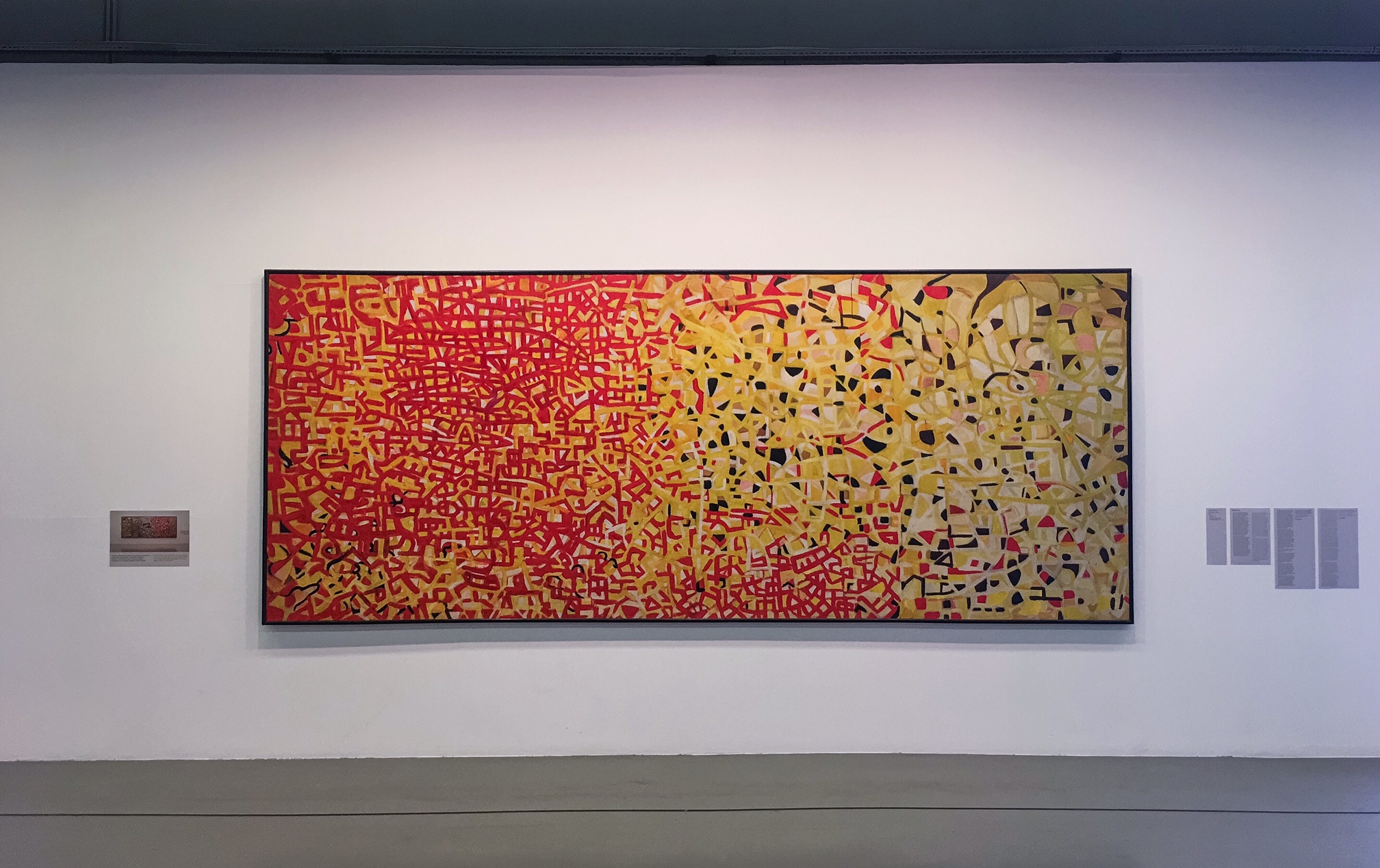
Abstract (Temporality…Water…Sun) 1953 – Oil on canvas
Fahrelnissa Zeid
‘Her artistic practice can be classified under the following periods: Her early period of figurative compositions with spaces constructed according to the style of miniatures; her period of maturity with geometric and freely abstractionist works reminiscent of stained glass surfaces; and her late period consisting mainly of portraits and in which psychological narrative comes to the fore.
“Abstract (Temporality… Water…Sun)”, from the artist’s period of maturity, was produced during the École de Paris period that emerged in Paris following World War ll and was dominated by non-figurative abstract art. The painting combines colors and movements that emphasize the chaos and dynamism of the earth, the universe, and humane nature.’
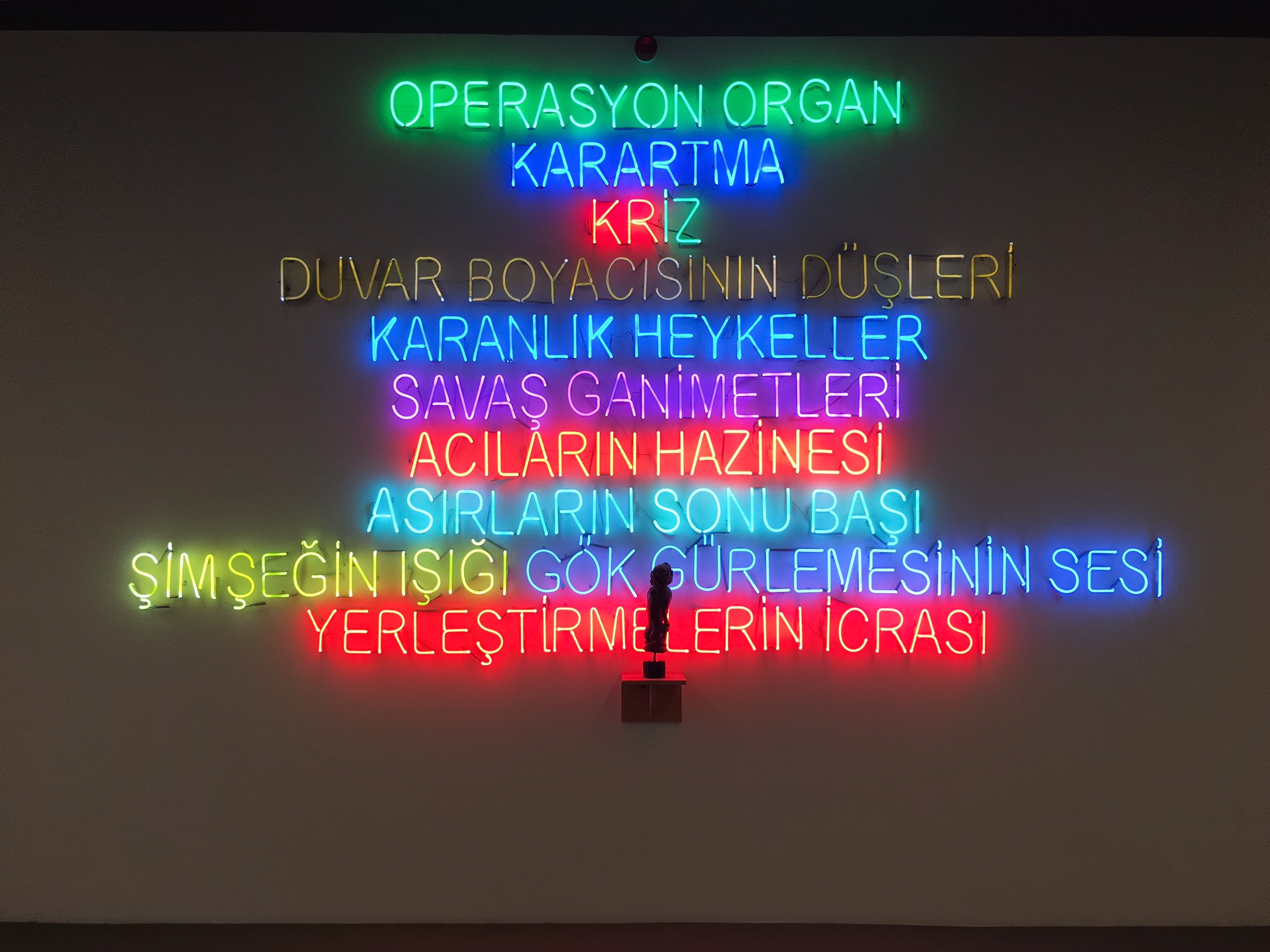
The first and only Turkish version colored neons and a sculpture from the Congo
Sarkis
‘The words in the neon work featured in his solo exhibition “Site”, which opened at Istanbul Modern in September 2009, indicate the different stages of his career. Sarkis comments on this work: “The stages of my career in art were written in neon like the names of night club singers. An African sculpture with a monkey’s skull dances in front of them.” ‘
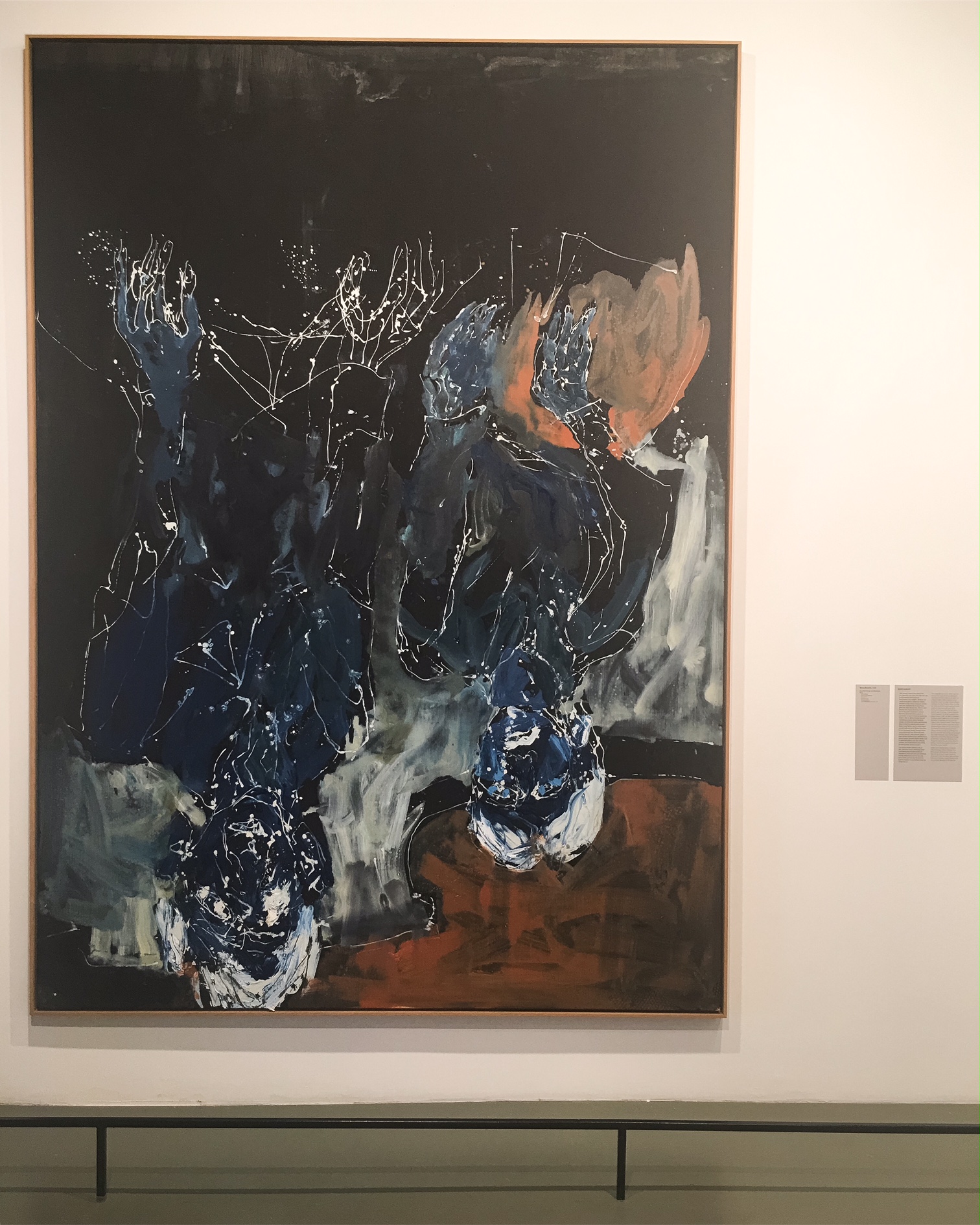
Georg Baselitz
‘Adopting an attitude opposed to the ordinary, the artist conveys the hardships of the Nazi era in his works about German history through ruins, rebels, shepherds, trees and other figures. These forms in his paintings reproduce the image of melancholy and eliminate the feeling of pity. Through the material that he uses and the tension he creates in content and composition, he calls into question the human condition.
Baselitz work in Istanbul Modern, collection “Yellowred Orange Turns into Bluedark” (Aus Gelbrotorange wire Blaudunkel), features the deformed, upside-down images created with strong brush strokes that appear again and again in his work as a reaction to past tribulations and his constructed pessimism of the present. ‘
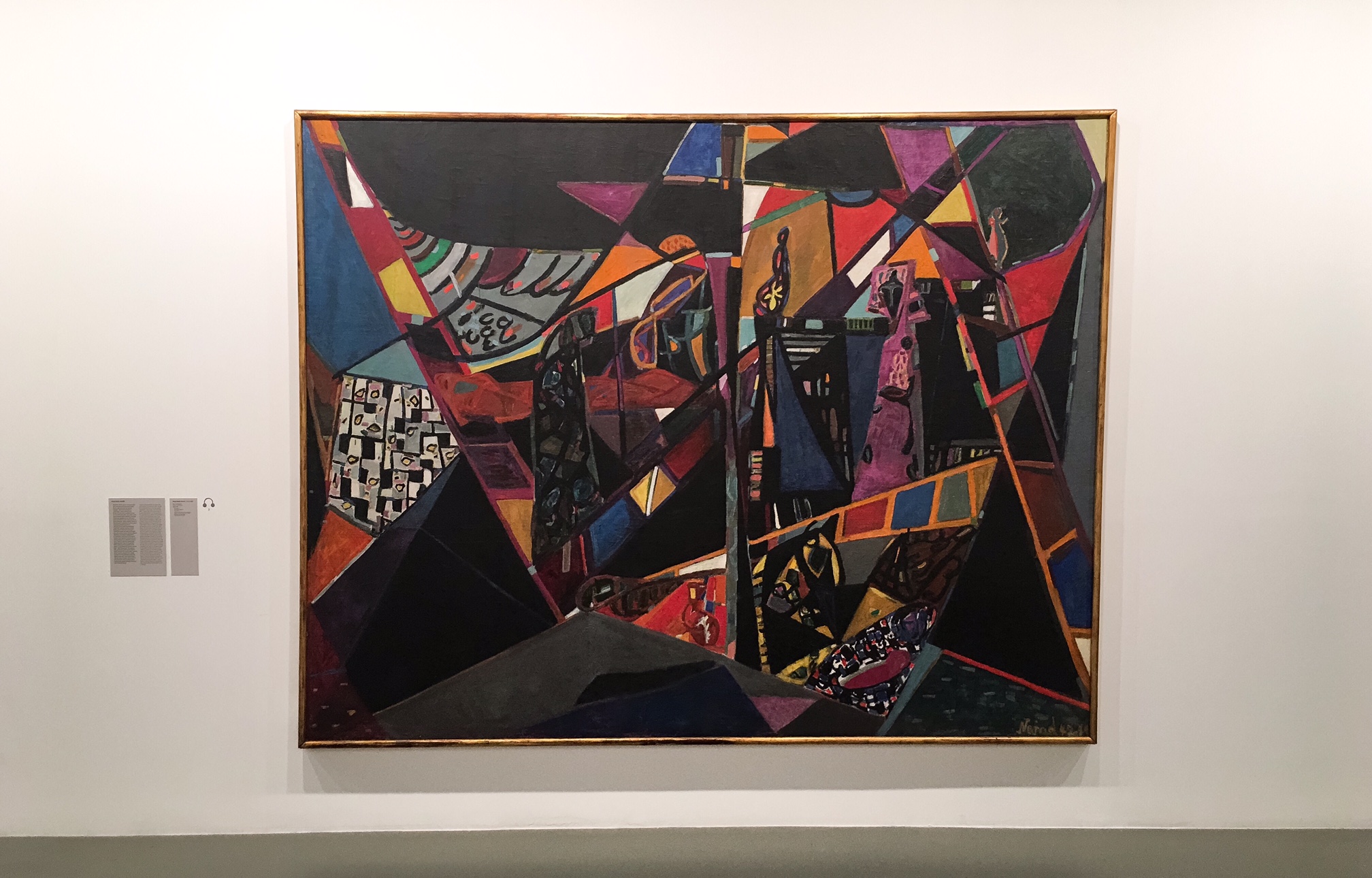
Nejad Melih Devirm
‘ “Abstract Composition” is the earliest-known example of an abstract painting by a Turkish artist. In this painting, surfaces divided into geometrical domains complete one another in a rhythmic balance, while color is used freely without implying any image of “nature”. Distinctive coloring methods are used for each area, producing different layered depths on the surfaces.’

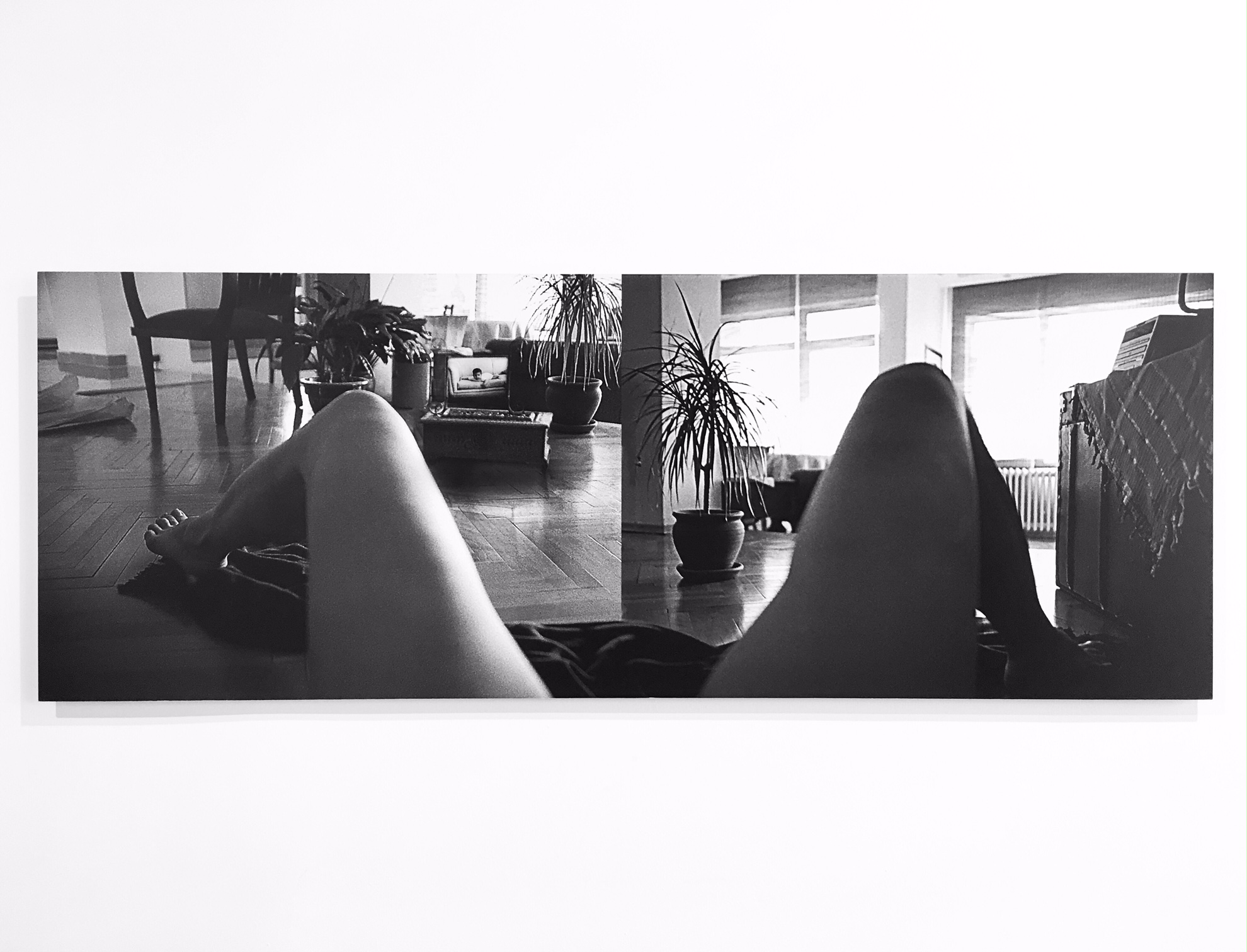
Gül Ilgaz
‘In her work she examines the contradictions between East and West, or traditional and modern. At the same time, she puts the dilemmas of her own life under the microscope. She explores various aspects of a woman’s identity from a personal standpoint.
In her work “Born/Bearing in to Death”, Gül Ilgaz treats birth as the beginning of death. The photograph shows not so much the physical side of birth as the separation of mother and child after delivery, the loss of their oneness. In the photograph, the child is across the room from the mother, but it has no existence of its own; the mother shows both the separation that comes with birth and the beginning of death.’
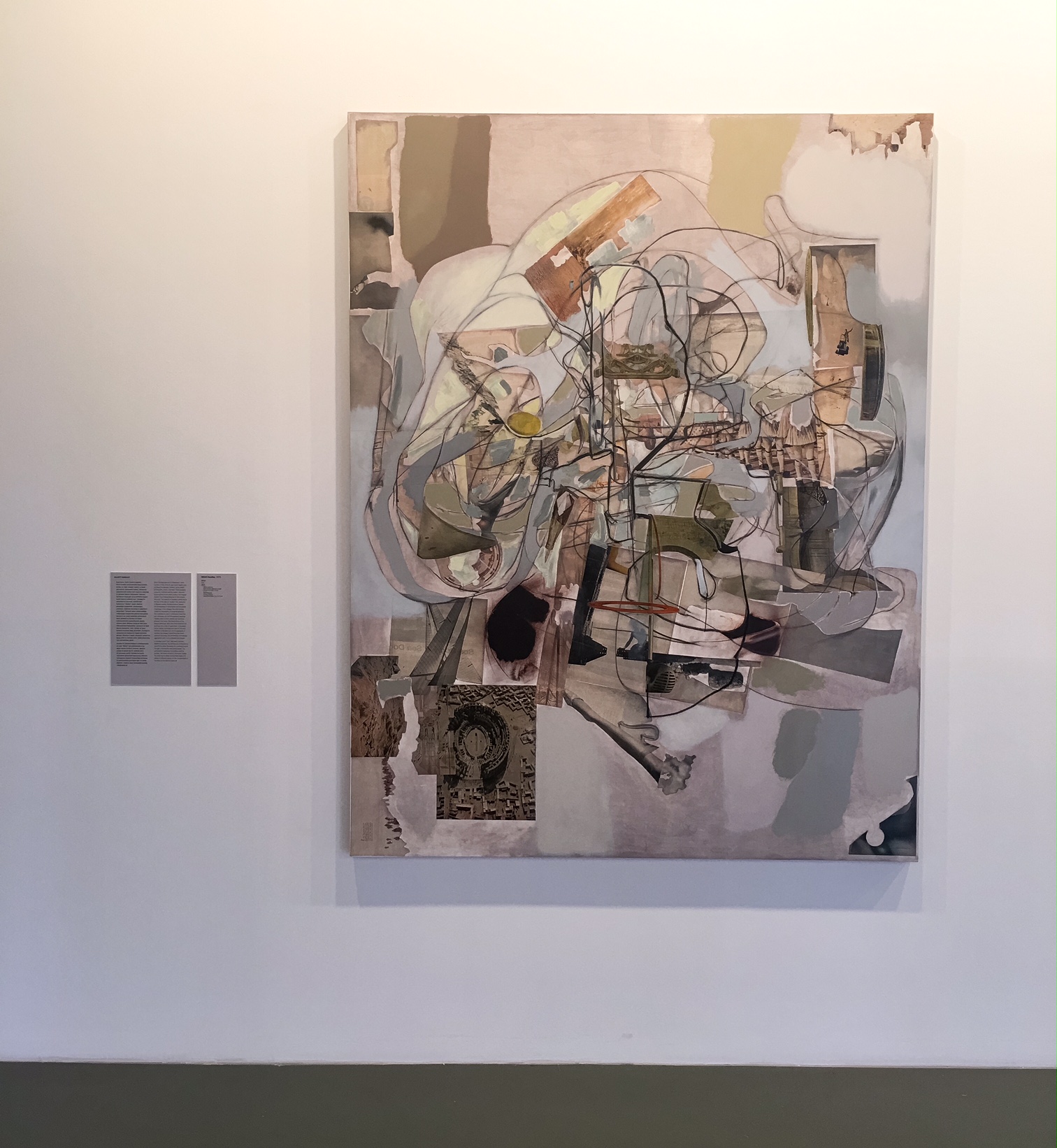
Elliot Hundley
‘In Hundley’s work “Part”, featured in Istanbul Modern’s collection, the architecture of intertwining spiral forms takes the viewer on a profound journey through a monumental and surreal space. The performative expression in Hindley’s working process, the layers formed by interwoven images, the small figure hidden among these layers and details of different places are like the equivalent of narrative on the abstract plane.‘
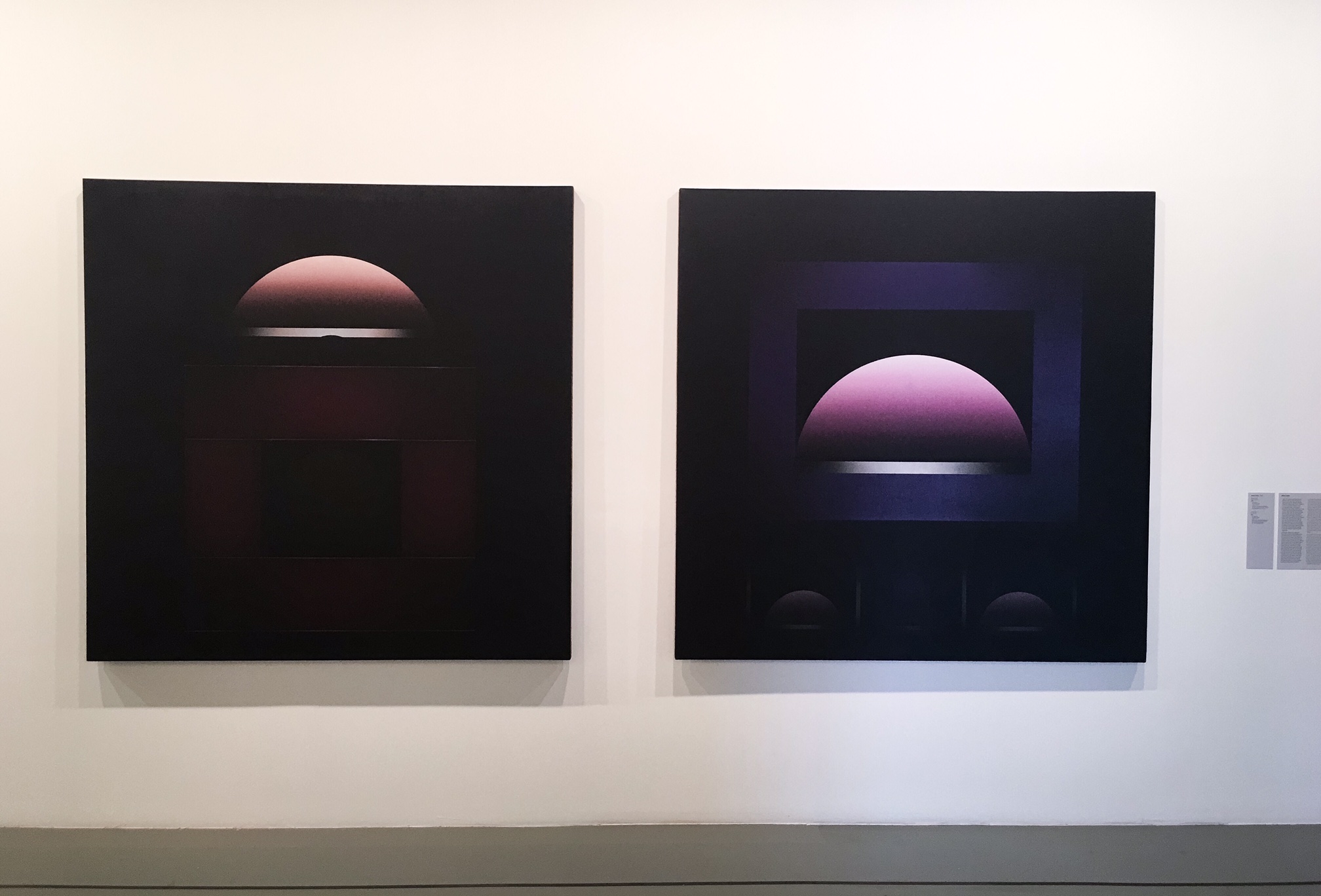
Magenta Square 1996- Acrylic on canvas

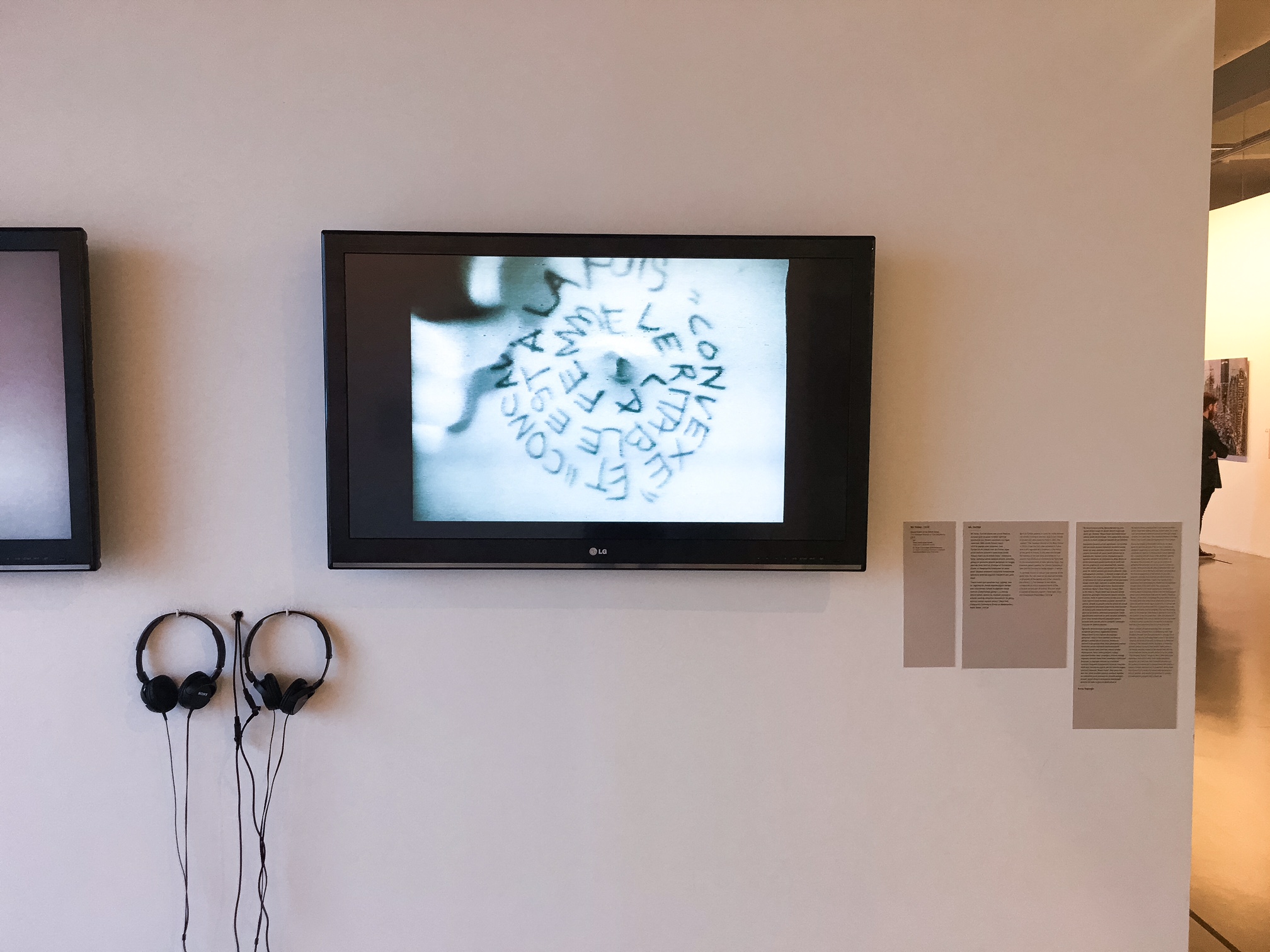
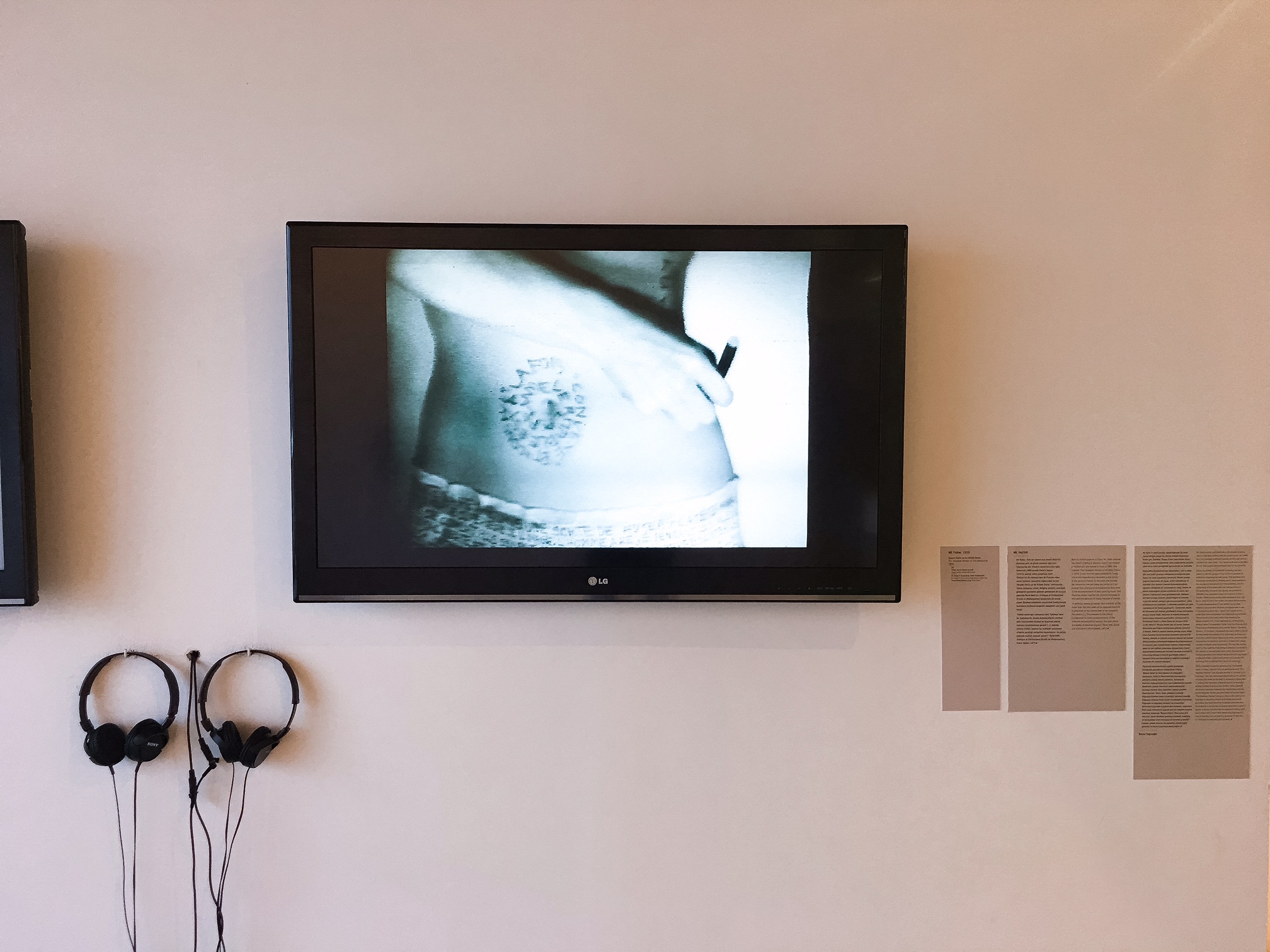
Nil Yalter
‘In the video she focuses her camera on her own belly and writes on it an excerpt from Erotique et Civilization by René Nelli to the accompaniment of belly-dancing music. She therefore draws together the Oriental fantasies of men and the demand for bodily freedom of women.
“A veritable woman in ‘convex’ and ‘concave’ at the same time. But she need not be deprived mentally or physically of the central part of her convexity: the clitoris (…). This aversion to the clitoris corresponds to man’s ancestral horror of this virile and natural part of woman, this part which is capable of absolute orgasm.” René Nelli, Erotic and Civilizations (Paris:Wber, 1972)’


Seyhun Topuz
‘Seyhun Topuz has used sculpture to make geometric, abstract statements. Her designs are made of forms not found in nature but rather shaped by notions of mathematical order and precision.
“Red V” is an example of recent work in which she explores how to achieve ideal forms by dissecting squares. Its sense of motion is created by the perfectly smooth, angular surfaces, which stand for nothing but themselves. The sculpture’s relationship with the floor is severed by platforms of varying heights. Topuz’s work strips the art of sculpture to its basic elements. ‘
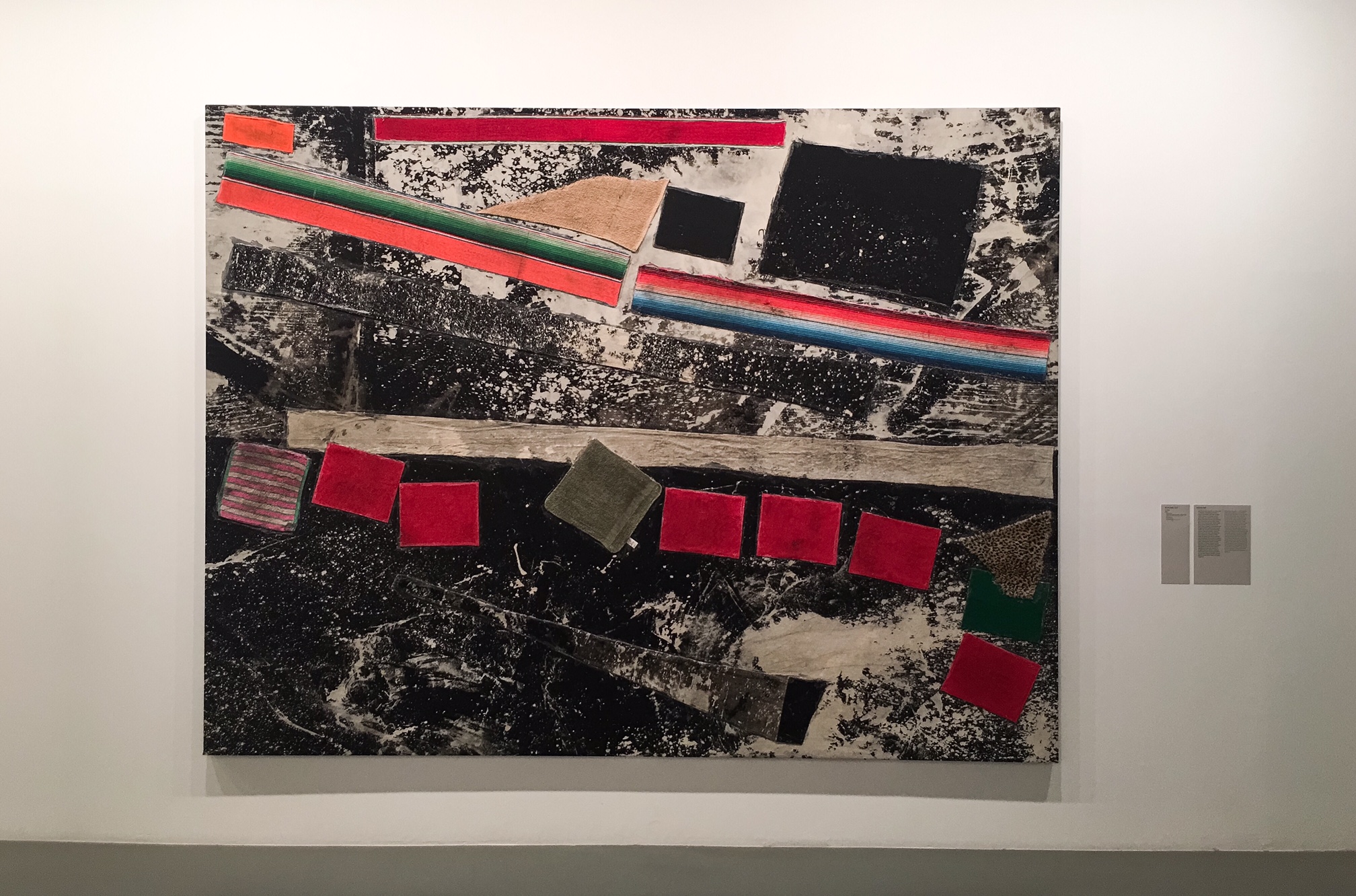
Sterling Ruby
‘Having exhibited work since 2004, he is relatively new to the art scene, but his installations, paintings, video, ceramics, and sculpture have gained considerable international recognition. In BC(3030), Ruby uses patches of fabric with different patterns and textures as his visual vocabulary, collaging these elements onto a canvas that has been painted, distressed, and stained with bleach. It utilizes striped Mexican rugs that evoke Hispanic culture and gangs in Los Angeles.’
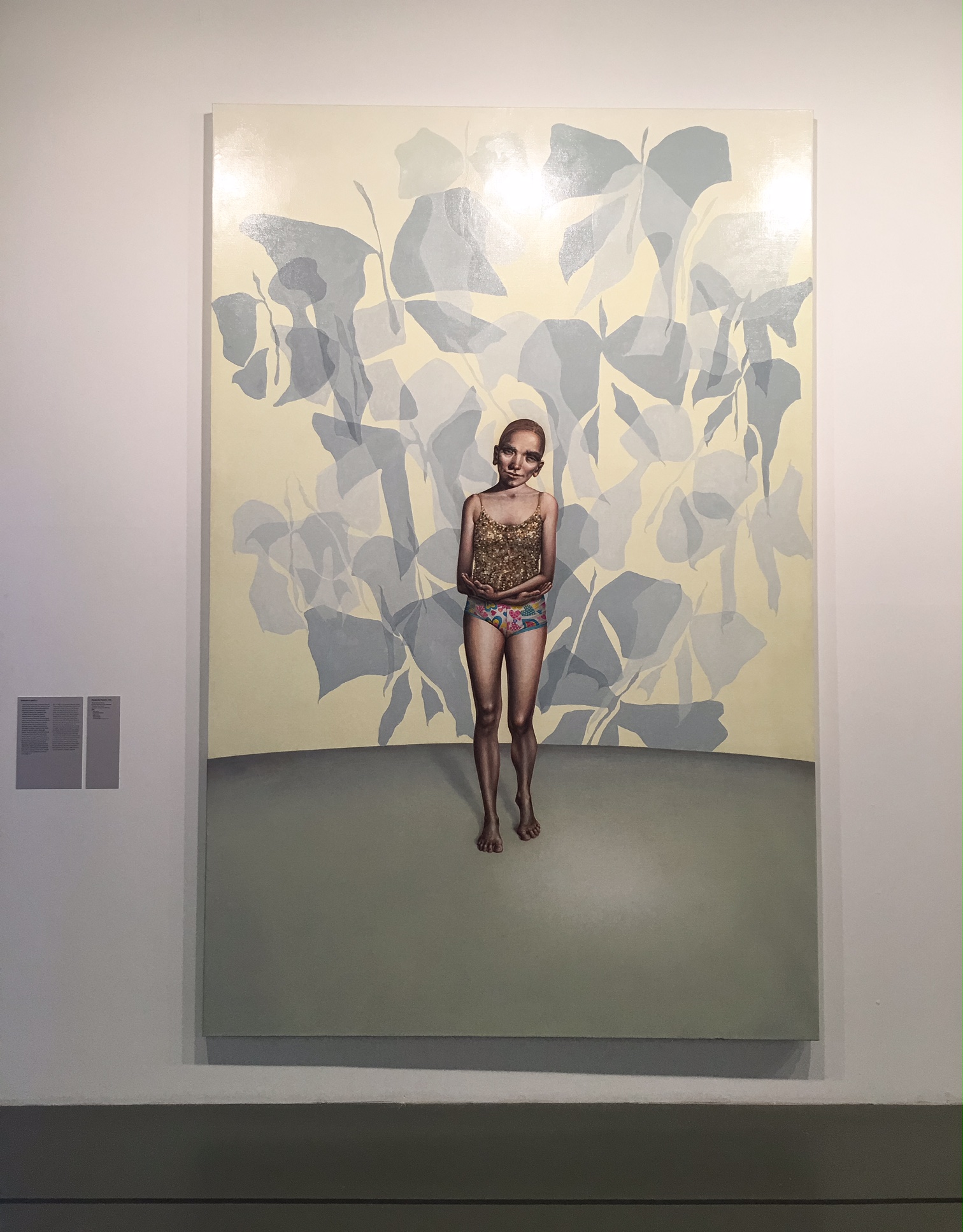
Margherita Manzelli
‘Manzelli uses both symbolic and ordinary articles like a heart-patterned underwear or a sequin top to define the bodies of the women she typically depicts. The women’s easily bruised, fine, veined skin and delicate bone structure that could break with the slightest shock make them vulnerable. Their facial and bodily expressions give the impression of a sensitive wound in the process of recovery and are reminiscent of melancholy and illness.’
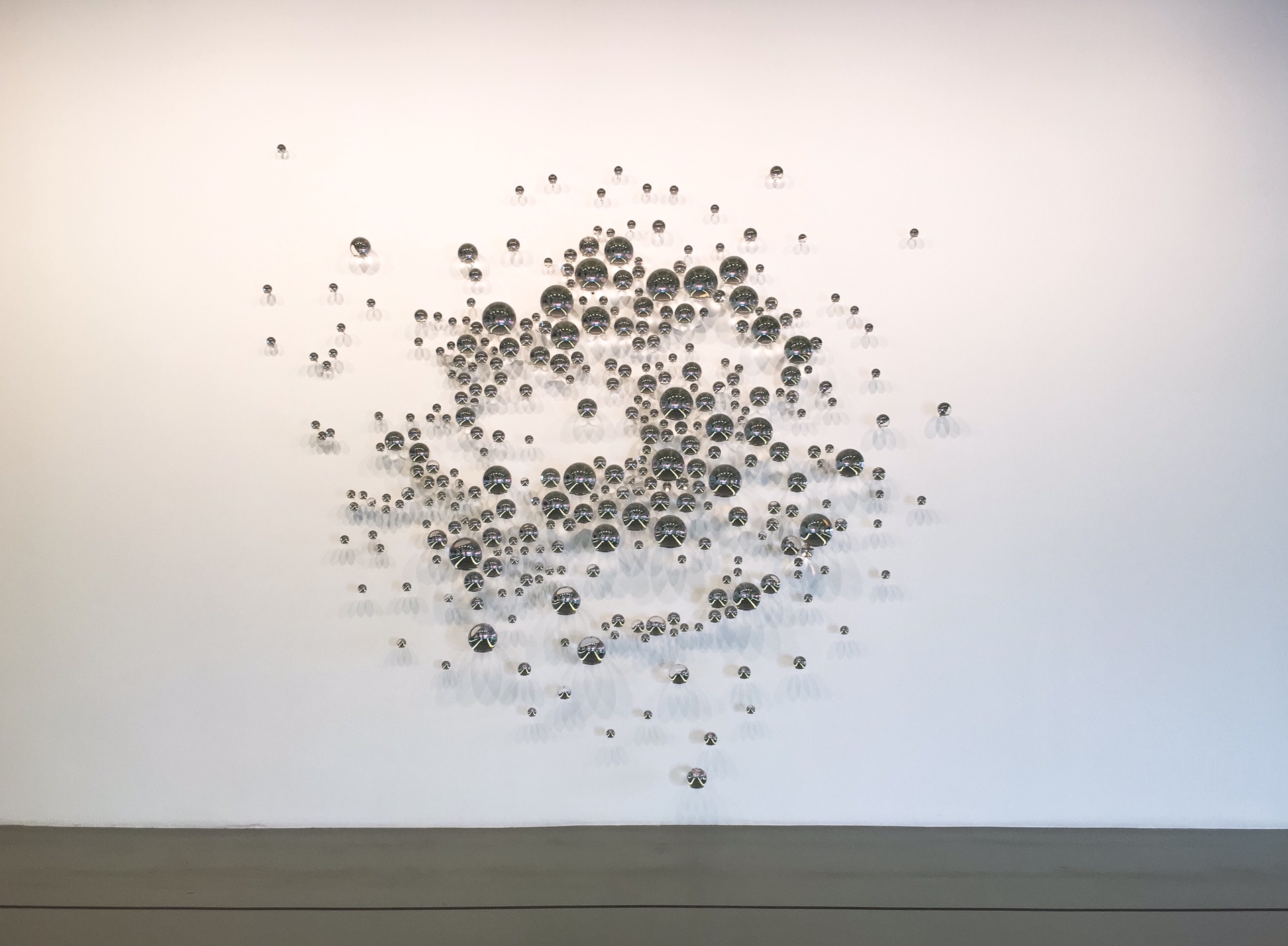

Olafur Eliasson
‘The artist’s work “Your solar nebula” is composed of 321 glass spheres reminiscent of natural phenomena, such as water droplets or teardrops. There are three colors at the back of each sphere: a silver mirror-like surface at the center merging with black paint to the right and yellow paint to the left. The spheres are of different sizes and, when seen as a whole, seem to be frozen in a way that is reminiscent of stars coming together to form a spiral galaxy. This form has no geometric outline or arrangement and invokes a moment without predetermined coordinates, like the flow of a stream of water or a shooting star.’

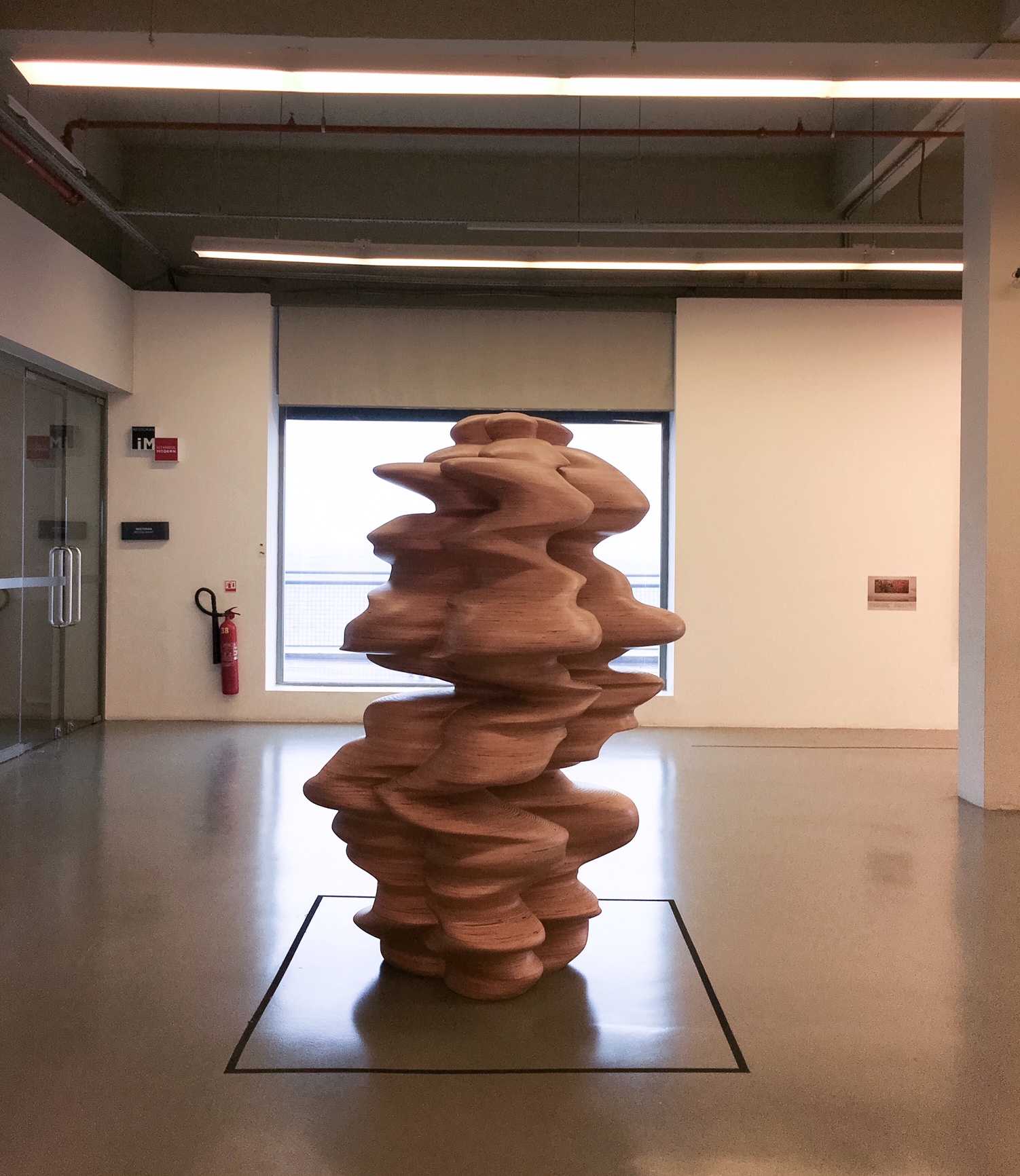
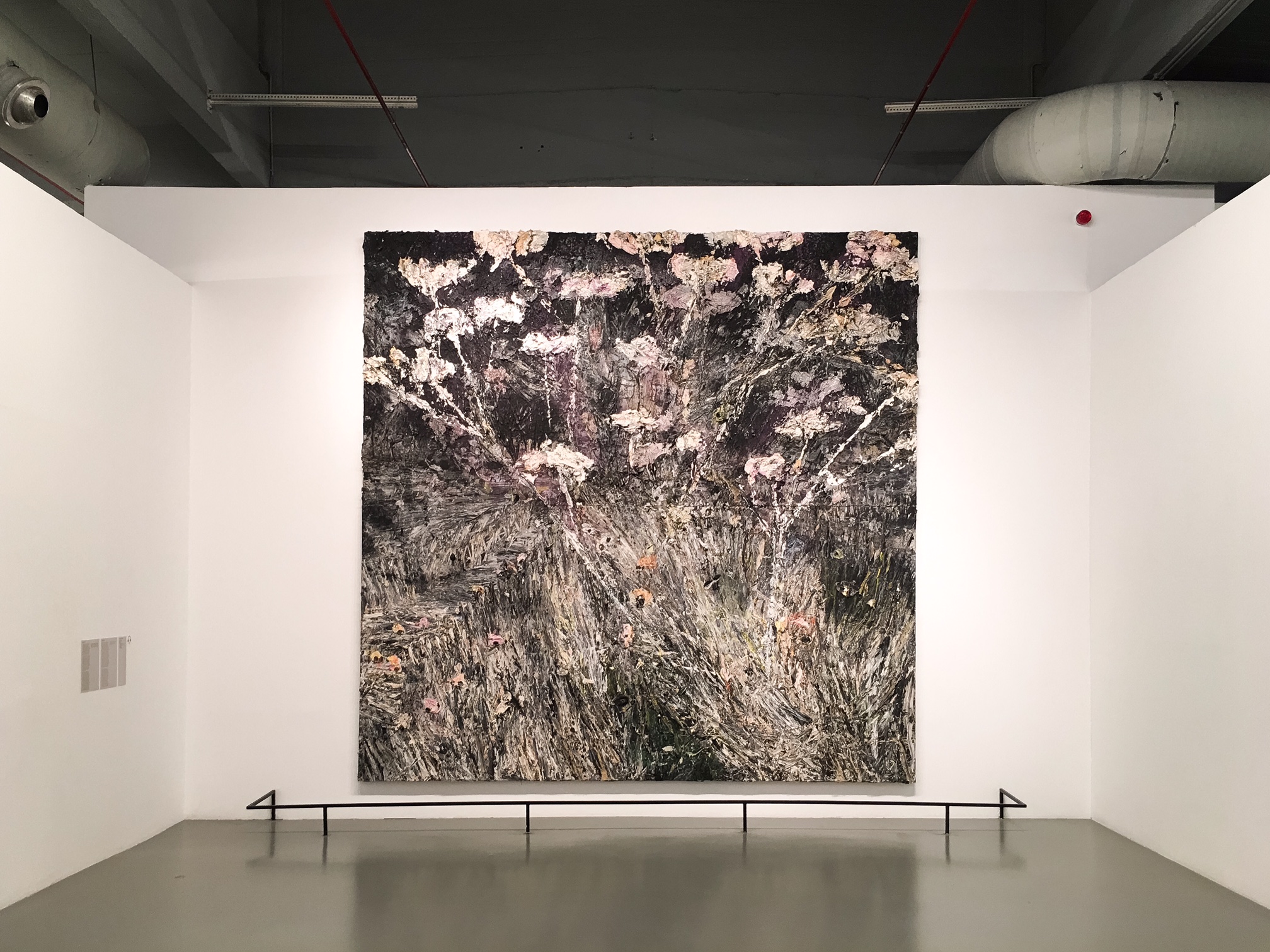
Anselm Kiefer
‘This work called “Morgenthau Plan” is from a series of the same title. The Morgenthau Plan proposed by the USA in 1944 aimed to convert post-war Germany into an agricultural country rather than an industrial one. Though the plan was never realized in its proposed form, it did create an alternative field of thought in terms of its emphasis on rural life as opposed to industrial development. In his works, Kiefer explores this rural way of life. As leitmotifs, the flowers concealed in the background or openly displayed on the surface refer to the ideal of a pastoral Germany with its agricultural fields and an increasing amount of farmland just prior to post-war industrial development. In the work, the flowers that bloom despite all the cultural, political, and ecological damage are not just motifs; as in the other works in the series, by affixing their photographs on the canvases using the marouflage technique, he readies the backgrounds for his works.’
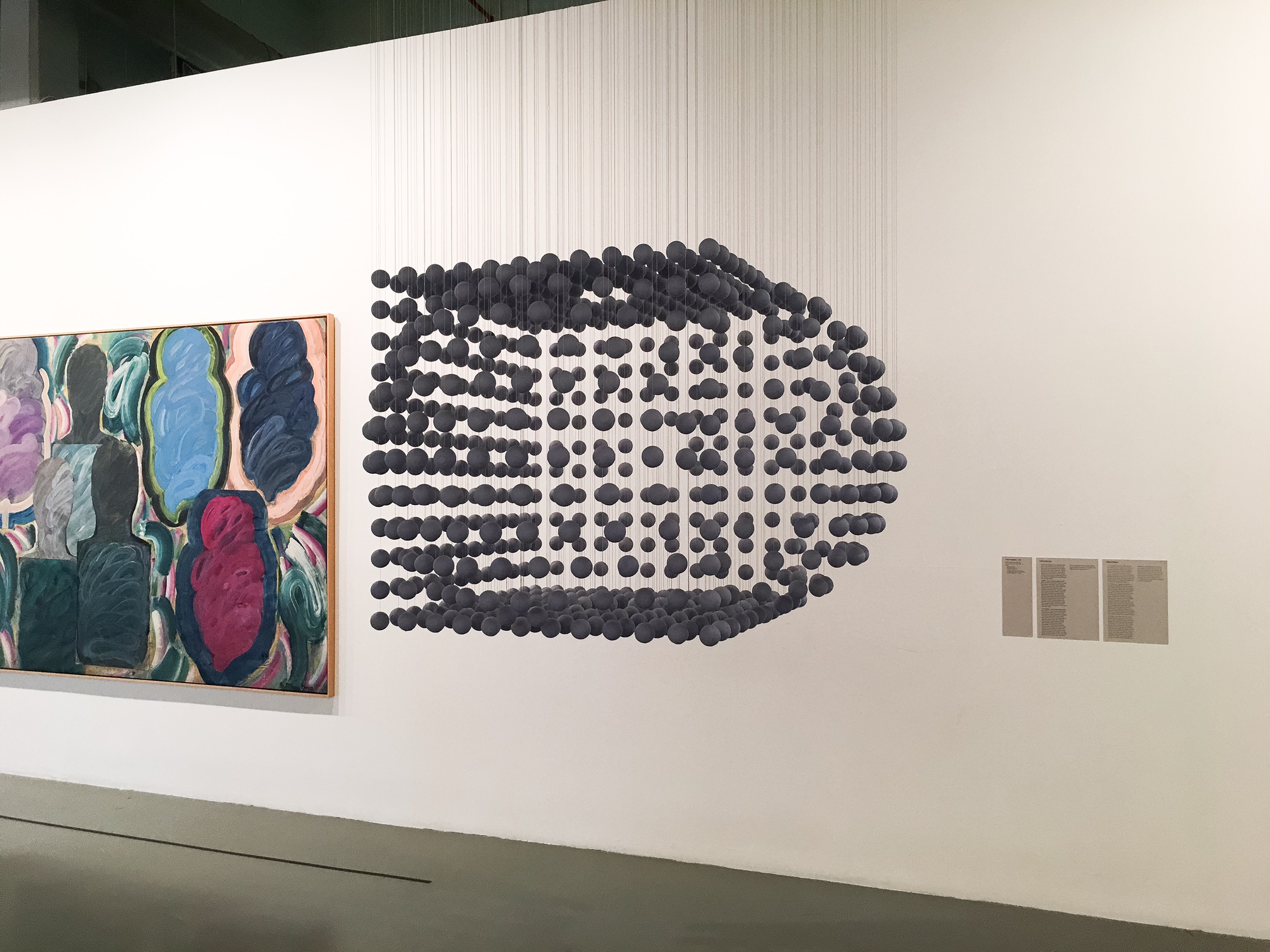
Canan Dağdelen
‘In her latest work, entitled “AT polar covalent bonded HOME dot”, she examines the concept of the “house” from different perspectives. While Dagdelen previously used existing fundamental architectural forms, in her latest work she goes one step further and crates an architectural shape of her own. In this work, she refers to the chemical bonds resulting from changes in electron distributing caused by the bonding of atoms. The covalent, particularly the polar covalent bond, is Dagdelen’s focus. Dagdelen draws an analogy between the function of architectural elements and a common polar covalent bonded attraction between the two different types of atoms that come together in a water molecule, H2O, and the sharing of electrons in the outer electron trajectory. She achieves a new fork in the work entitled “AT polar covalent bonded HOME dot”, which consists of two domes and one cubic body. The way in which it is situated in space encourages viewers to seek its form and discover its own unique language.’
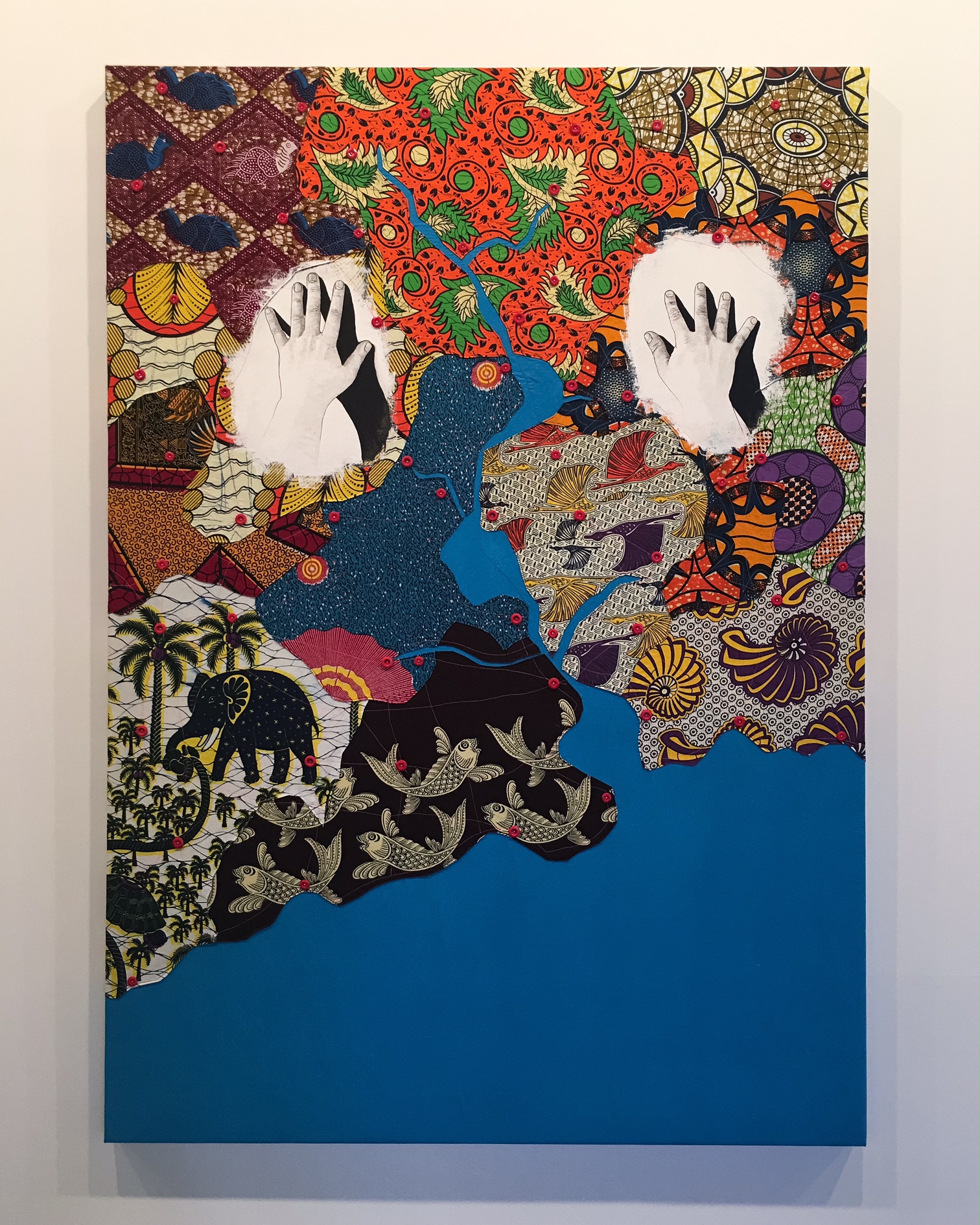
Servet Koçyiğit
‘Koçyiğit observes his places of residence both as an insider and outsider, and reflects his observations in his artistic practice by considering them jointly with local and global issues and contexts. He pulls everyday concerns, conventional functions, routine tasks, ordinary household utensils or found objects out of context and imparts them with new meanings or reconsiders them within entirely different contexts.’

Tomas Saraceno
‘His project “Air-Port-City” from 2007, made of airbags and nets, is a light but massive structure that references atomic forms. Saraceno presents architectural alternatives to our notions about nationality, property, city plans and territorial boundaries. He designs technically possible but utopic solutions to our socio-cultural and environmental problems.
“The Air-Port-City” project aims to create free-floating international cities that are independent of territorial borders and which redefine political and economical system. He designs technically feasible utopias in answer to socio-cultural and ecological problems. “The Flying Garden” project is made of garden modules that reflect the intrinsic, chaotic harmony of ecological structures in this new utopia.’
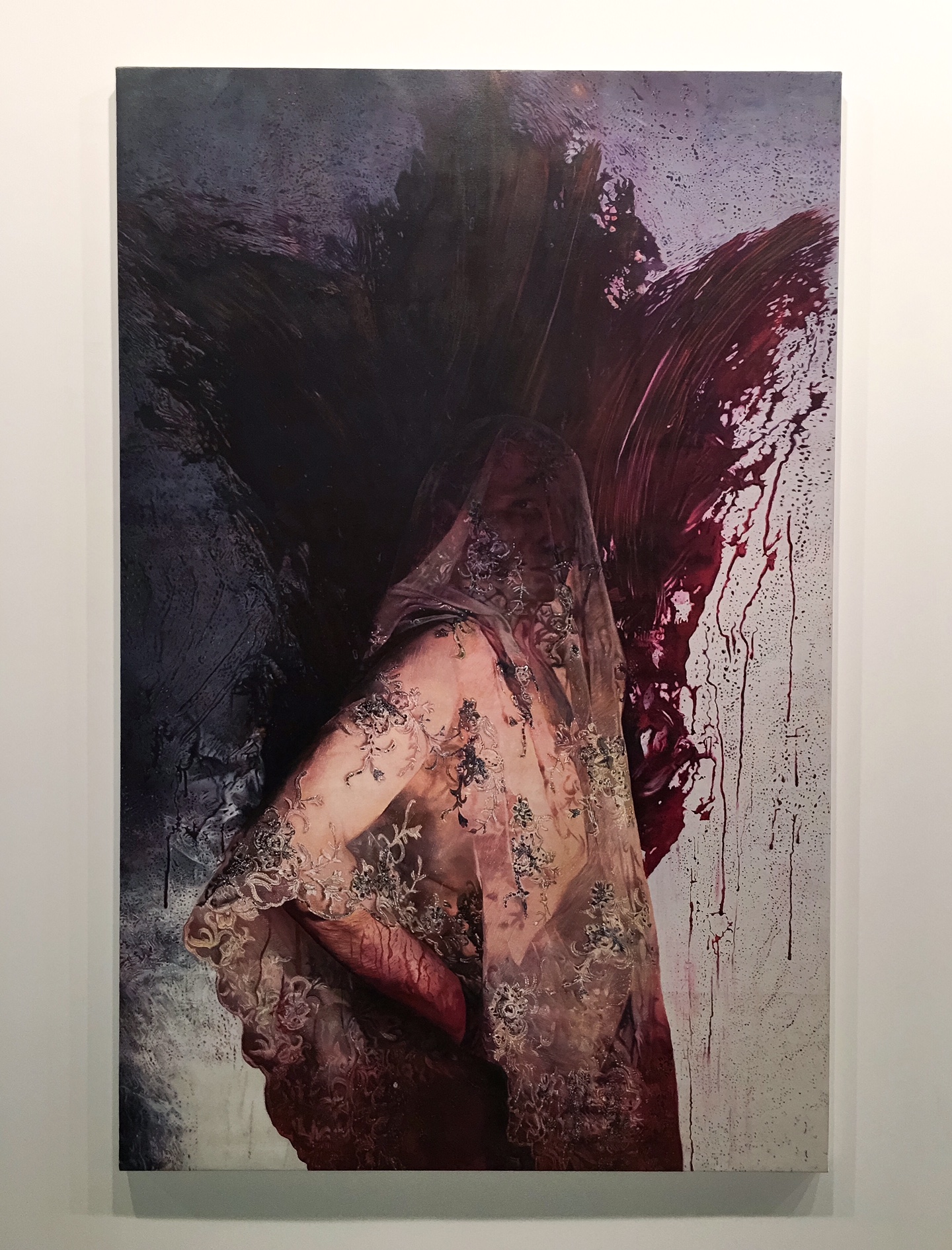
2012- Oil on canvas
Taner Ceylan
‘The title of Ceylan’s painting “1553”, inspired by Süleyman the Magnificent’s wife Hürrem Sultan, is a reference to the year when Süleyman had his son Prince Mustafa killed. The blood spread on the painting’s surface reminds us of the tension between power, force, and violence. According to Ceylan eternal life and everlasting beauty always requires sacrifice. The veil that conceals the face of the subject in the painting also symbolizes the way power nourishes itself on a covert violence. The artist works with people in his close circle such as Alp, the model for this painting, whom he has often used as a model in his previous works. ‘
Photography: Art Road
Notes: Istanbul Modern